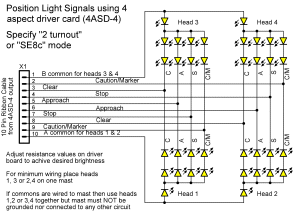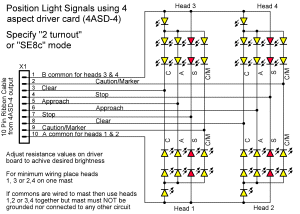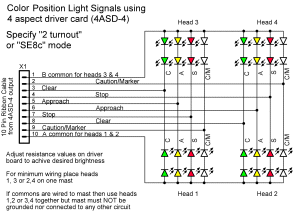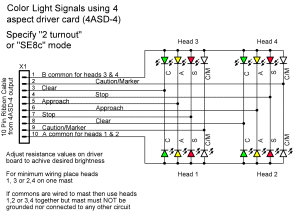Position Light Signals
Position light signals are more difficult to drive than color
light signals due to the number of LEDs involved. The simplest wiring
option is shown here. However this connection puts three yellow LEDs
in series for each aspect. Yellow LEDs require over 2 volts each to
illuminate, so it is not possible to drive this simply wired head directly
from a 5 volt source. To solve this problem the 4ASD-4 board includes
a voltage mirror circuit that supplies approximately 9 volts to the
driver circuits. This board also multiplexes the output lines and includes
the current limiters internally. This allows 4 heads to each be driven
with 4 aspects using just 10 wires. Normally we drive 4 heads, with
just 3 aspects each plus dark, on each output port. This frees the
4th aspect connections to optionally be used to illuminate fixed marker
lights if so desired.
| 
|



